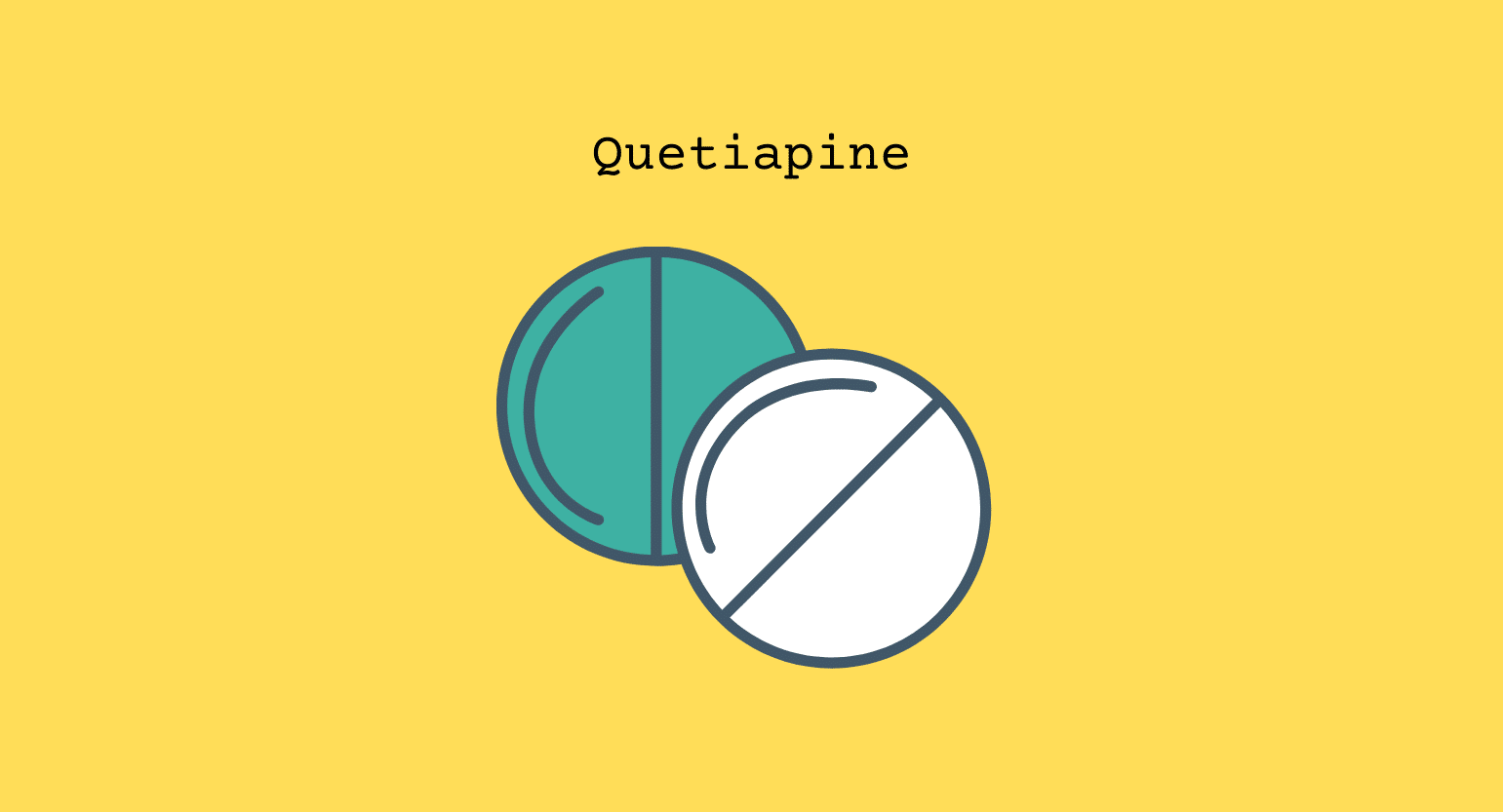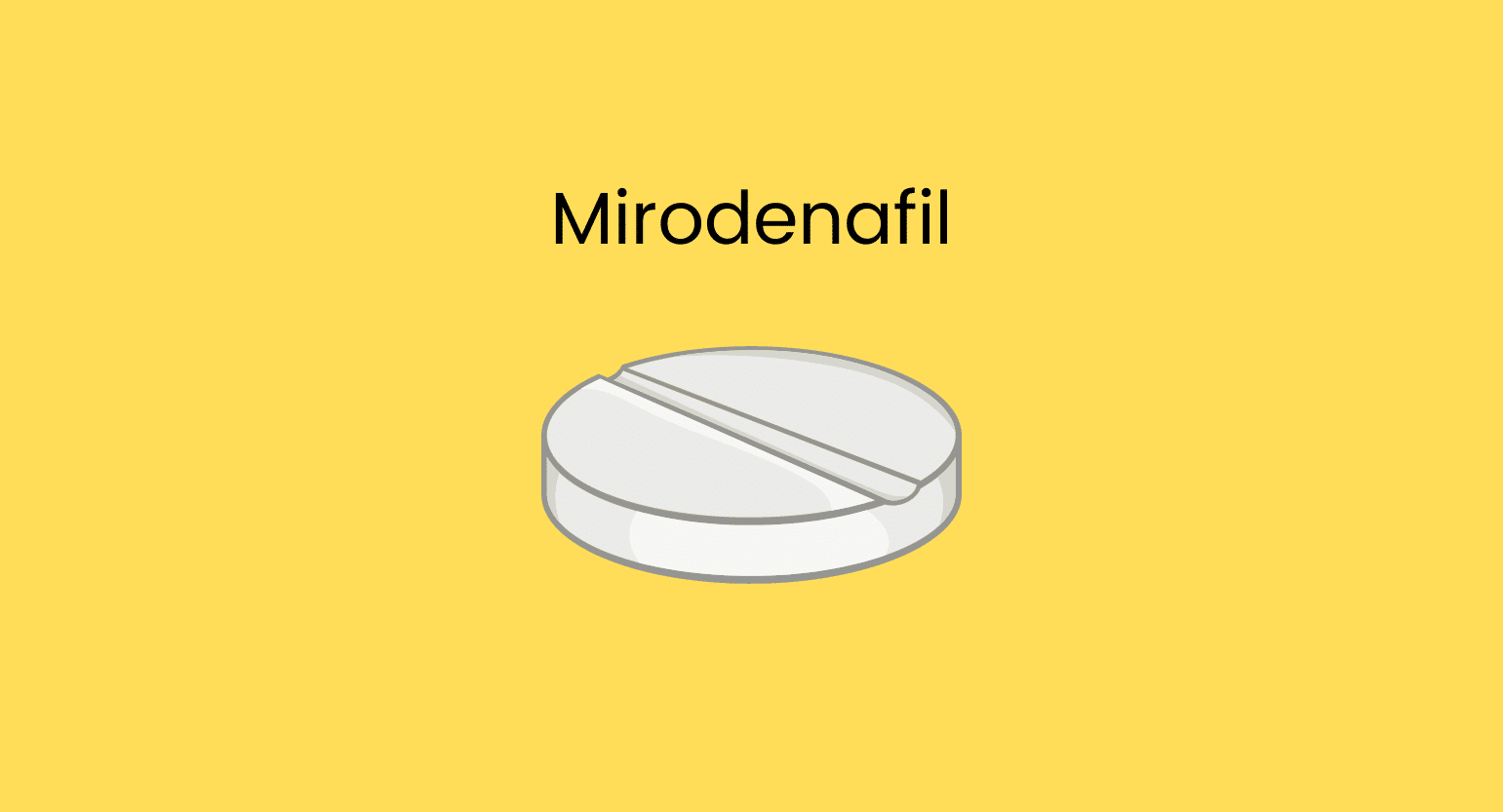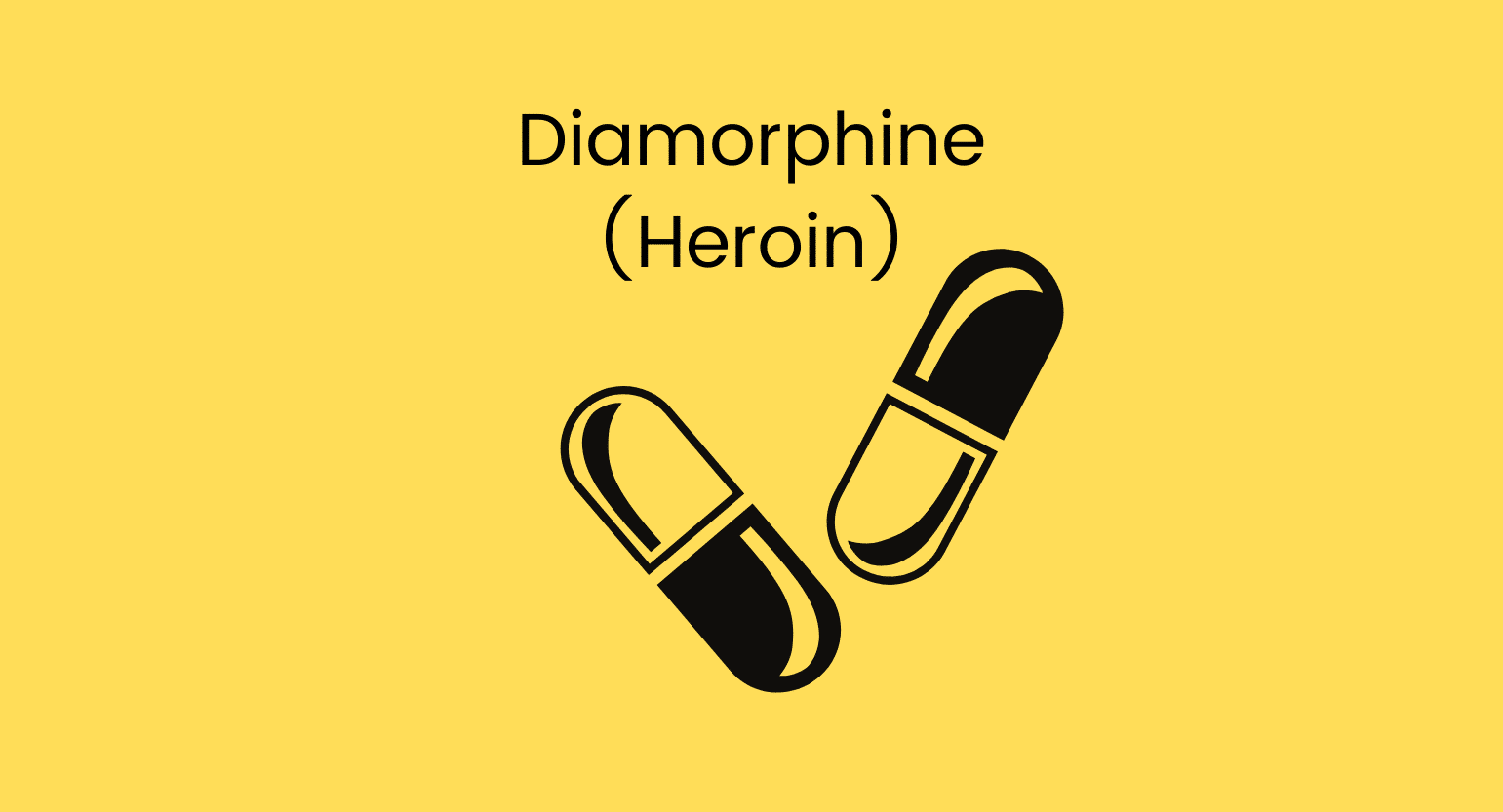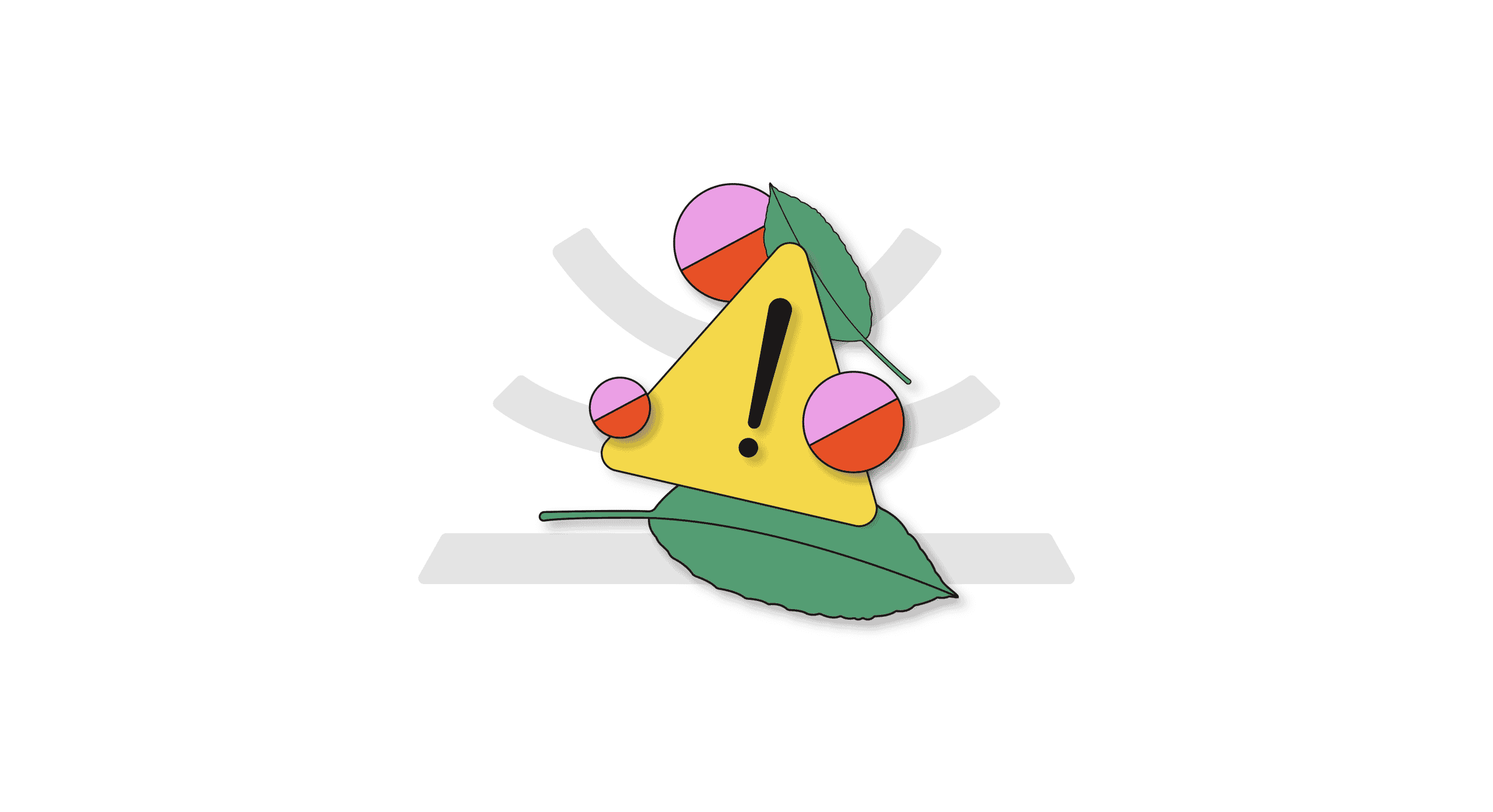Does Kratom Interact With Quetiapine (Seroquel)?
Yes —quetiapine and kratom interact with each other at a metabolic level. These two compounds are considered metabolic competitors —meaning they bind to the same enzymes for their proper breakdown and elimination.
Specifically, quetiapine and kratom are metabolized by the CYP3A4 liver enzyme [1, 2]. If they’re taken together, both substances will have a longer half-life as the liver struggles to metabolize both efficiently.
Without sufficient levels of activity from CYP3A4, dangerous levels of quetiapine can build up in the bloodstream. Unfortunately, overdoses of quetiapine can be fatal [3].
Since quetiapine is usually taken daily, the drug’s concentration in the bloodstream can continue to rise if it’s taken alongside kratom with frequency.
It’s possible your doctor could recommend a lower dose of quetiapine if you plan to take kratom alongside it. Still, most physicians will likely recommend ceasing kratom use altogether if they prescribe quetiapine.
Kratom & Antipsychotic Medication Interactions
Quetiapine is classified as an antipsychotic drug and is most often used for treating bipolar disorder, schizophrenia, and other mental health issues.
Using other antipsychotic medications with kratom can bring a similar risk of negative interactions and is potentially dangerous.
Other related antipsychotic medications kratom will interact with include:
- Aripiprazole (Abilify, Abilify Maintena & Aristada)
- Asenapine (Saphris, Sycrest & Secuado)
- Cariprazine (Vraylar & Reagila)
- Chlorpromazine (Ormazine, Thorazine & Thorazine Spansule)
- Clozapine (Clozaril, Fazaclo & Versacloz)
- Fluphenazine (Moderate, Moderate Concentrate, Moditen, Prolixin & RhoFluphenazine)
- Haloperidol (Haldol, Haldol Decanoate, Haloperidol LA & Peridol)
- Lurasidone (Latuda)
- Olanzapine (Zyprexa & Zyprexa Zydis)
- Perphenazine (Trilafon, Etrafon, Triavil & Triptafen)
- Risperidone (Risperdal M-Tab & RisperiDONE M-TAB)
- Thioridazine (Mellaril)
- Thiothixene (Navane)
- Trifluoperazine (Stelazine)
- Ziprasidone (Geodon, Zeldox & Zipwell)

Is It Safe to Take Kratom With Quetiapine (Seroquel)?
Most experts consider it unsafe to consume kratom while taking quetiapine (Seroquel). A physician may suggest a smaller dose of quetiapine that might be safe to take alongside kratom in some rare cases.
However, most doctors will strongly recommend against taking these two drugs together. The risk of dangerous and fatal interactions is relatively high.
What Is Quetiapine (Seroquel)?
Quetiapine (Seroquel) is an atypical antipsychotic medication used most commonly to treat schizophrenia, bipolar disorder, and other mental health issues [3].
Quetiapine Details & Specifications

| Drug Name | Quetiapine |
| Trade Name | Seroquel & Seroquel XR |
| Classification | Atypical Antipsychotic |
| CYP Metabolism | CYP3A4 |
| Interaction With Kratom | Metabolic Competitor |
| Risk of Interaction | High |
What Is Quetiapine (Seroquel) Used for?
Quetiapine is used most often to treat schizophrenia in young adults and adults. However, it has a variety of uses for treating other mental health disorders, including manic depressive disorder, major depressive disorder, and depression.
It’s considered one of the safest antipsychotics for young adults older than 13 years, making it one of the most prescribed substances for patients in this age range [4]. It’s also helpful in treating mental disorders in adults, but it can be hazardous for older patients coping with dementia.
What’s the Dose of Quetiapine (Seroquel)?
Quetiapine comes in two different forms:
- Extended-release tablets —taken once daily
- Immediate-release tablets —taken twice to three times daily
Doctors usually prescribe small doses of 25 mg twice per day for one to two days, after which the amount gradually increases to between 300 and 400 mg within a week.
Immediate-release tablets deliver between 25 and 200 mg.
Extended-release tablets can contain up to 400 mg of the antipsychotic, allowing the patient to take a single dose each day.
Daily doses up to around 750 mg are considered safe and might be prescribed depending on symptoms and experienced side effects.
Its commonly recommended to take quetiapine on an empty stomach or with a light meal.
Generic & Brand Name Versions
Quetiapine is a generic drug name typically sold under the trade names Seroquel and Seroquel XR, the latter of which is the extended-release version.
You can also find quetiapine in the market under the following brand names:
- Atrolak
- Biquelle
- Q-mind
- Sondate
- Zaluron
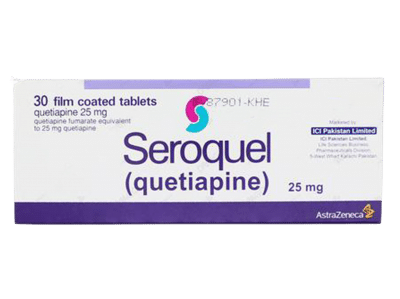
What Are the Side Effects of Quetiapine (Seroquel)?
Quetiapine causes many side effects; some are serious [1]. It is crucial to take quetiapine precisely as prescribed by a healthcare provider and follow their instructions. Before starting treatment, it is also important to be aware of the potential risks and benefits of quetiapine.
Quetiapine’s more common side effects include the following:
- Constipation
- Dizziness
- Dry Mouth
- Lethargy
- Lightheadedness
- Motor function issues
- Racing heartbeat
- Tiredness
- Upset stomach
- Vomiting
- Weight gain
Quetiapine’s serious side effects include the following:
- Chills
- Continuous vomiting
- Difficulty breathing
- Difficulty swallowing or speaking normally
- Erratic heartbeat
- Excessive thirst
- Fainting
- Fever
- High blood pressure
- Involuntary muscle movements like chewing the lip
- Pain while urinating
- Severe constipation
- Stiff muscles
- Visual hallucinations, including tunnel vision
What Is Kratom?
Kratom (Mitragyna speciosa) is a tree that grows primarily in Southeast Asia. Its leaves contain several alkaloids that give it beneficial health properties. Kratom has been a popular treatment in traditional medicine for centuries to combat fatigue and pain.
What’s Kratom Used for?
Some of the most common uses of kratom include [5]:
- Attention Deficit & Hyperactivity Disorder (ADHD)
- Anxiety relief
- Arthritis pain
- Chronic back pain
- Depression and mood disorders
- Energy & focus
- Fibromyalgia
- Insomnia
- Migraines
- Psoriatic arthritis pain
- Weight loss
- Work out supplement
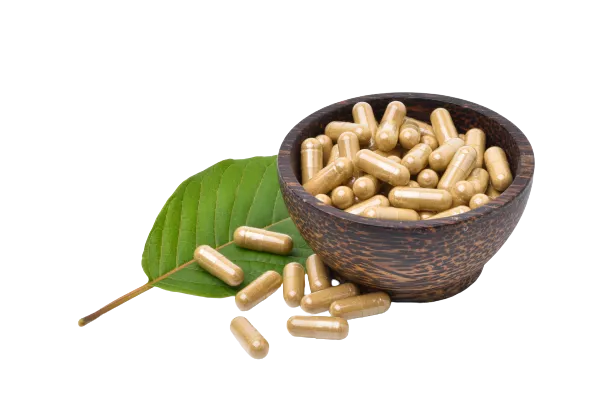
What’s the Dose of Kratom?
A standard kratom dose ranges between 2 and 8 grams daily. However, the kratom dose for an individual depends on several factors, including their size and weight, the effects they want to achieve (stimulating or relaxing), and their tolerance to the drug.
At low doses (1 – 4 g), most users will experience stimulation, increased energy, and improved focus and concentration.
Higher doses (4 –8 g) usually provide more powerful pain relief, intense sedation, and relaxation.
It’s better to stay under 8 g of kratom powder daily, as higher doses tend to have a greater risk of side effects.
Try our dosage calculator and learn how to measure your kratom dose here.
Caution: Measuring kratom by volume is less accurate than weight. Use a scale.
Related: Can You Overdose on Kratom?
What Are the Side Effects of Kratom?
Kratom can come with several side effects, which aren’t severe for most users. The most common side effects of kratom use include:
- Anxiety or jitteriness
- Constipation
- Diarrhea
- Dizziness
- Headaches
- Heart palpitations
- Libido loss
- Liver damage (with long term-use)
- Nausea
One of the more severe side effects is dependence. Kratom can be habit-forming, so limiting your dose and taking week-long breaks once a month will often help reduce the risk of addiction.
Do not take kratom if you are pregnant or breastfeeding.
What Are the Different Types of Kratom?
Kratom leaves are categorized into three primary vein colors: red, green, and white.
The effects of the kratom you consume depend on the strain color. For example, white vein kratom is best for fatigue, and red vein is a better analgesic.

White Vein Kratom
White vein kratom is more stimulating and often has nootropic effects, so many people take it to improve mental performance and boost energy. The alkaloid content responsible for white kratom’s effects is achieved by harvesting the kratom tree’s leaves early in its maturation process.

Red Vein Kratom
Red vein kratom is most often used for pain relief and sedation, and many users take it as a sleep aid or to cure insomnia or restlessness. Farmers who want a red-vein variety tend to wait until the plant is fully mature to harvest the leaves.

Green Vein Kratom
Green vein kratom tends to be a hybrid of red and white, offering some of the benefits of each. Unsurprisingly, green-vein kratom is harvested in the middle of the tree’s maturation process, when white and red-vein kratom would be harvested.

Yellow Vein Kratom
Yellow vein kratom is far less popular than the three primary color variations, and we don’t know much about how it’s produced. Some speculate that the yellow color comes from the leaves’ fermentation after harvesting. Others maintain that the timing of the harvest is responsible for the unique color. Another theory is that the color comes from mixing red, white, and green varieties.
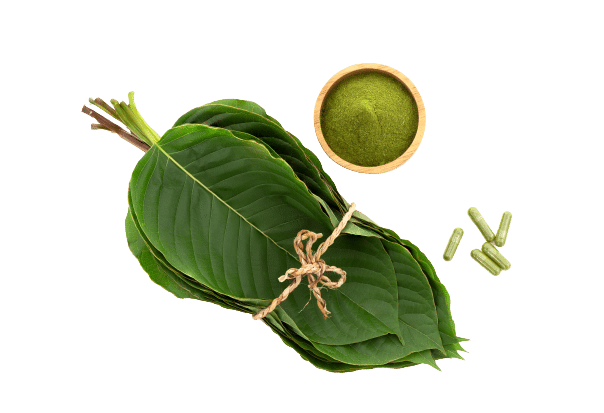
Key Takeaways: Is It Safe to Mix Kratom & Quetiapine (Seroquel)?
Most doctors will strongly recommend against mixing quetiapine and kratom. This combination is unsafe. These two are metabolic competitors, so both substances can build up in the bloodstream to toxic levels.
Quetiapine (Seroquel) is an atypical antipsychotic medication used to treat various mental disorders, including schizophrenia and bipolar disorder. It’s often taken daily to treat or prevent psychotic episodes.
Some doctors might recommend a lower dose of quetiapine if you’re dead-set on taking kratom — however, generally speaking, you should avoid taking these two substances simultaneously.
- Bakken, G. V., Rudberg, I., Christensen, H., Molden, E., Refsum, H., & Hermann, M. (2009). Metabolism of quetiapine by CYP3A4 and CYP3A5 in presence or absence of cytochrome B5. Drug metabolism and disposition, 37(2), 254-258.
- Kamble, S. H., Sharma, A., King, T. I., León, F., McCurdy, C. R., & Avery, B. A. (2019). Metabolite profiling and identification of enzymes responsible for the metabolism of mitragynine, the major alkaloid of Mitragyna speciosa (kratom). Xenobiotica, 49(11), 1279-1288.
- Maan, J. S., Ershadi, M., Khan, I., & Saadabadi, A. (2017). Quetiapine.
- Solmi, M., Murru, A., Pacchiarotti, I., Undurraga, J., Veronese, N., Fornaro, M., … & Carvalho, A. F. (2017). Safety, tolerability, and risks associated with first-and second-generation antipsychotics: a state-of-the-art clinical review. Therapeutics and clinical risk management, 13, 757.
- Eastlack, S. C., Cornett, E. M., & Kaye, A. D. (2020). Kratom—Pharmacology, clinical implications, and outlook: a comprehensive review. Pain and Therapy, 9(1), 55-69.

